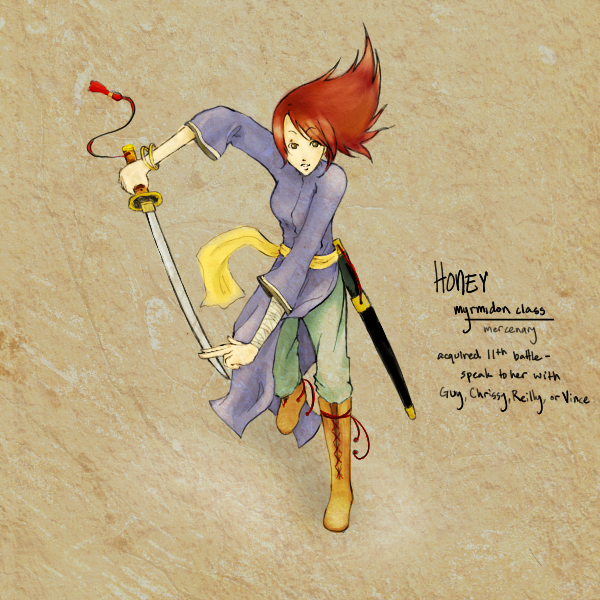HOME | DD
 strawberry-tree — .kokoro.
by-nc-nd
strawberry-tree — .kokoro.
by-nc-nd

Published: 2008-02-13 04:32:04 +0000 UTC; Views: 537; Favourites: 1; Downloads: 10
Redirect to original
Description
don't look.hanakotoba
“The pen in my hand makes a faint scratching sound as it traces one character after another down the page. My heart is tranquil as I sit before my desk. If the strokes of my character sometimes seem ill-arranged, […] attribute it […] to my inexperience with the pen.”
-Soseki, page 131
The naïve innocent walks beside me,
I who am shrouded in the shadows of the hōrii trees.
Dashing through the furījia flowers as quick as he can
to reach our goal. Or is it
his goal, and I only accompanying him
on his journey?
Perhaps, though, the other way around.
Sensei, he calls me;
Master, mentor.
“If one respects one’s elders because they
have lived longer and have become
more soiled than oneself,
then certainly
I deserve [his] respect.”
Do not think to
offer me suisen, or place me on a pedestal;
I do not belong there.
In time, I would fall apart
as do all things
even
the core, kokoro.
Yet as we continue on,
the yew trees above blocking
out the light,
my presence pulls the other
closer,
full of sincere curiosity.
His eyes are earnest, his face
communicating his honest intentions
as we walk through the baioretto blooms.
But should I let this
cancer-infected heart of mine
spread to this child?
If I “drench [his] face with my blood,”
would he also be drawn into the gloom
of this age we live in?
So I hold tight, and wrap around myself
so as not to let any more of the darkness leak out,
but this does not deter him.
Even as we pass by the grave honored by dried bara,
shrouded in the shade of the gingko tree,
he continues to ask his guileless questions.
I cannot be distracted by
the lingering echoes of the
koto, though it calls to me from behind.
Shirayuri-white fingers that pluck the strings:
better to leave
and continue on alone
than taint those who
would attempt closeness. I hold on to the
withered higanbana stems.
But this one, who
plucks the panjī by the dappled roadside,
and offers me anemone flowers,
I am drawn to;
so as far as I try to distance myself,
I only return,
feeling unworthy of the
hyakunichisō given to me.
Through unsubtle hints, I warn him of those who would
steal what is rightfully his,
oniyuri turning to dust through outstretched fingers.
But finally, I realize what I should do.
I place the words in his proffered palm,
and also one suītopī bloom, colors already fading.
Then finally, “without hesitation,
I […] force [him] into the shadows.”
(quote: Soseki, page 142, 129, 128)
Hanakotoba: The Language of Flowers
(Many of these flowers have more than one meaning, but these are the ones I have chosen to use to suit the poem.)
Furījia – Freesia: Child-like/Immaturity
Suisen – Daffodil: Respect
Baioretto – Violet: Honesty
Bara – White Rose: Silence/Devotion
Shirayuri – White Lily: Purity
Higanbana – Red Spider Lily: Never to Meet Again/Lost Memory/Abandonment
Panjī – Pansy: Thoughtful
Anemone: Sincere
Tsubaki – White Chrysanthemum: Truth
Hyakunichisō – Zinnia: Loyalty
Oniyuri – Tiger Lily: Wealth
Suītopī – Sweet Pea: Goodbye
Gingko: Timelessness
Hōrii – Holly: The tree represents death and rebirth
Yew: The tree represents death and rebirth, similar to Holly
(Though these trees are most often pines, it is not rare to have flat-leafed Yew and Holly trees)
Related content
Comments: 2

I thought tsubaki meant camellia, holly was hiiragi and white chrysanthemum was shiragiku... :\ It's still awesome. :3
👍: 0 ⏩: 1

It very might well be - I wrote this a while ago with the help of online translators and a flower language site, so the accuracy might not be the best. I'm glad you like it, though!
👍: 0 ⏩: 0
























